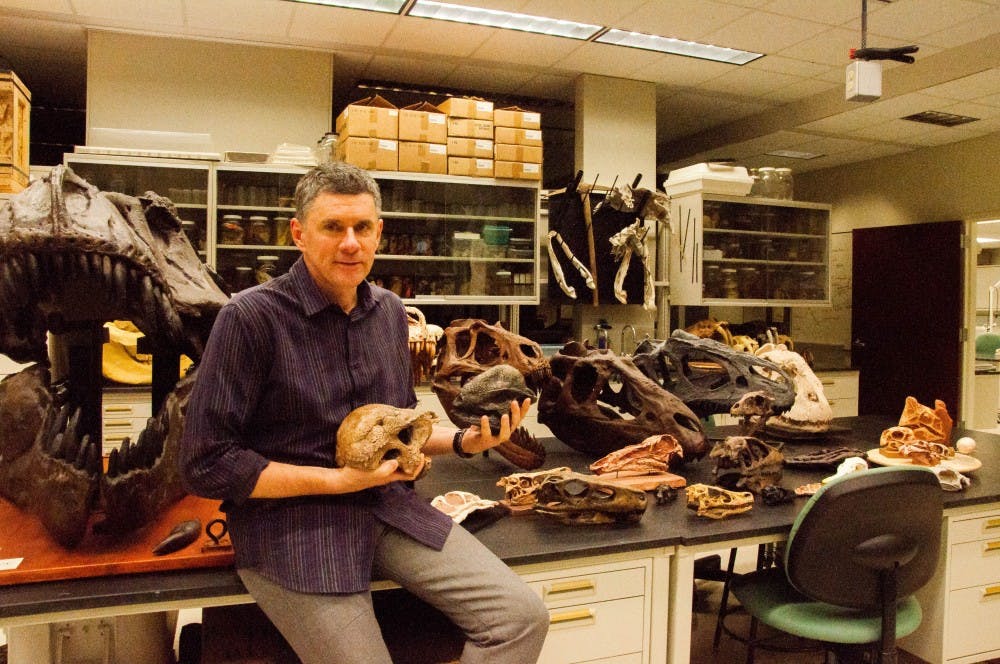A recent fossil discovery by a team of researchers from Ohio University, Virginia Tech and the University of Texas at Austin shows that the bone structures of dinosaurs may have evolved from the structures of other reptiles that came before them.
Anatomy professor Lawrence Witmer and research associate Ryan Ridgely from OU’s Heritage College of Osteopathic Medicine were asked to use their expertise in analyzing CT scans to help find more information about the fossil.
“That’s really become the tool of choice that’s a non-destructive way to look inside (the fossil),” Ridgely said. “It takes a lot of experience to actually interpret what you’re seeing on the screen. It doesn't just give you a print out and say ‘This is the answer.’ ”
The fossil was named Triopticus primus or “the first of three eyes” for the large opening on its head that resembled a third eye socket. After Triopticus was scanned using an industrial CT scanner at the University of Texas at Austin, the data was then sent to Ridgely and Witmer, who have analyzed CT scans together for 14 years.
“One of the things that is significant for OU and for the Heritage College is that Ryan Ridgely and I, whether we wanted to or not, have sort of become go-to people to help understand the detailed anatomy of a new kind of animal,” Witmer said.
Witmer and Ridgely have been involved in naming two other species in the past ten months. The pair worked with scientists in Australia to analyze the skull of an armored dinosaur, which is now called Kunbarrasaurus. They also provided insight on a new species called the Sarmientosaurus musacchioi.
Before Witmer and Ridgely began working on their latest project, the fossil sat unnoticed in the Texas Vertebrate Paleontology Collections for 70 years. The Works Progress Administration originally discovered the fossil in Big Spring, Texas in 1940.
“It’s actually way more common than you think,” Ridgely said. “You’re out there doing field work and you just bring back tons of stuff ... and it just sits there.”
Although only the skull has been discovered, scientists know enough about Triopticus to help classify it as part of the archosauriformes, a group of reptiles that includes dinosaurs, crocodiles and birds, among others.
Triopticus’s skull appears to be similar to the skull of a pachycephalosaur, a dinosaur that existed almost 150 million years later.
“These later dinosaurs’ groups were, in a sense, evolutionary copycats,” Witmer said.
In addition, many of the other animals found in the same area as Triopticus also resemble other later dinosaurs.
“Triopticus is an extraordinary example of evolutionary convergence between the relatives of dinosaurs and crocodylians and later dinosaurs, which is much more common than anyone ever expected,” Michelle Stocker, one of the primary authors of the study and a researcher from Virginia Tech, said. “What we thought were unique body shapes in many dinosaurs actually evolved millions of years before in the Triassic Period, about 225 million years ago.”
Witmer said the discovery could help benefit students because it could show them the type of research offered at OU.
“The exciting thing about projects like this is that it actually shows people the science that is going on here at OU,” Witmer said. “We are doing research all the time on the structure of animals, both animals that are around today as well as these ancient animals.”






